“Customer experience strategy” is a fancy name for a simple thing: how you go about making sure your customers (and potential customers) have a great experience with your company.
Lots of ink has already been spilled about what makes for a good customer experience (and for good reason—half your customers will jump ship for a competitor after a crummy interaction). I want to talk about what makes for a bad one.
You can’t fix something if you don’t know it’s broken. And most companies have a major blind spot when it comes to customer experience strategy.
Keep reading to learn:
- Why you’re missing out on key customer signals
- What it takes to build a better customer experience strategy
- How to surface the customer insights you need
Massive opportunity is passing you by
Here’s a little thought experiment.
Imagine you’re an account executive at a software company. You’re checking your email, drinking your morning coffee, and then—boom—you have three separate customer interactions in quick succession.
First you get a message from one of the must-win accounts you’ve been chasing. This person tells you they’ve heard good things about your product and are eager to learn more.
Moments later, the product champion who helped you land your latest enterprise deal gets in touch. They say they’re struggling with one of your product’s new features and could use some help.
Then the day-to-day contact for one of your oldest customers pings you. They let you know they’ve hit the ceiling on their current plan and want to discuss upgrading.
Busy day, I know. Now imagine you ignore all of them.
I’m not sure what kind of relationship you have with your boss, but if I didn’t follow up on a question or complaint from a current customer or hot lead, well…the phrase “heads will roll” comes to mind.
Yet that’s what lots of companies unknowingly do every single day.
Customers enter digital channels. They send out signals that tell you how to win their business, prevent their churn, or keep them growing with you. And the teams responsible for taking action—marketing, sales, customer success, support—are missing in action instead.
Now, to be fair, it’s not those teams’ fault. Most go-to-market tools aren’t built for the modern customer journey.
CRM data tells you what customers are saying to your face (and becomes outdated alarmingly fast). Product data shows you which widgets customers are playing with (but not necessarily who they are or whether they're a good fit).
But the digital interaction data that tells you what people are really saying, doing, and thinking? That’s hidden in your dark funnel.
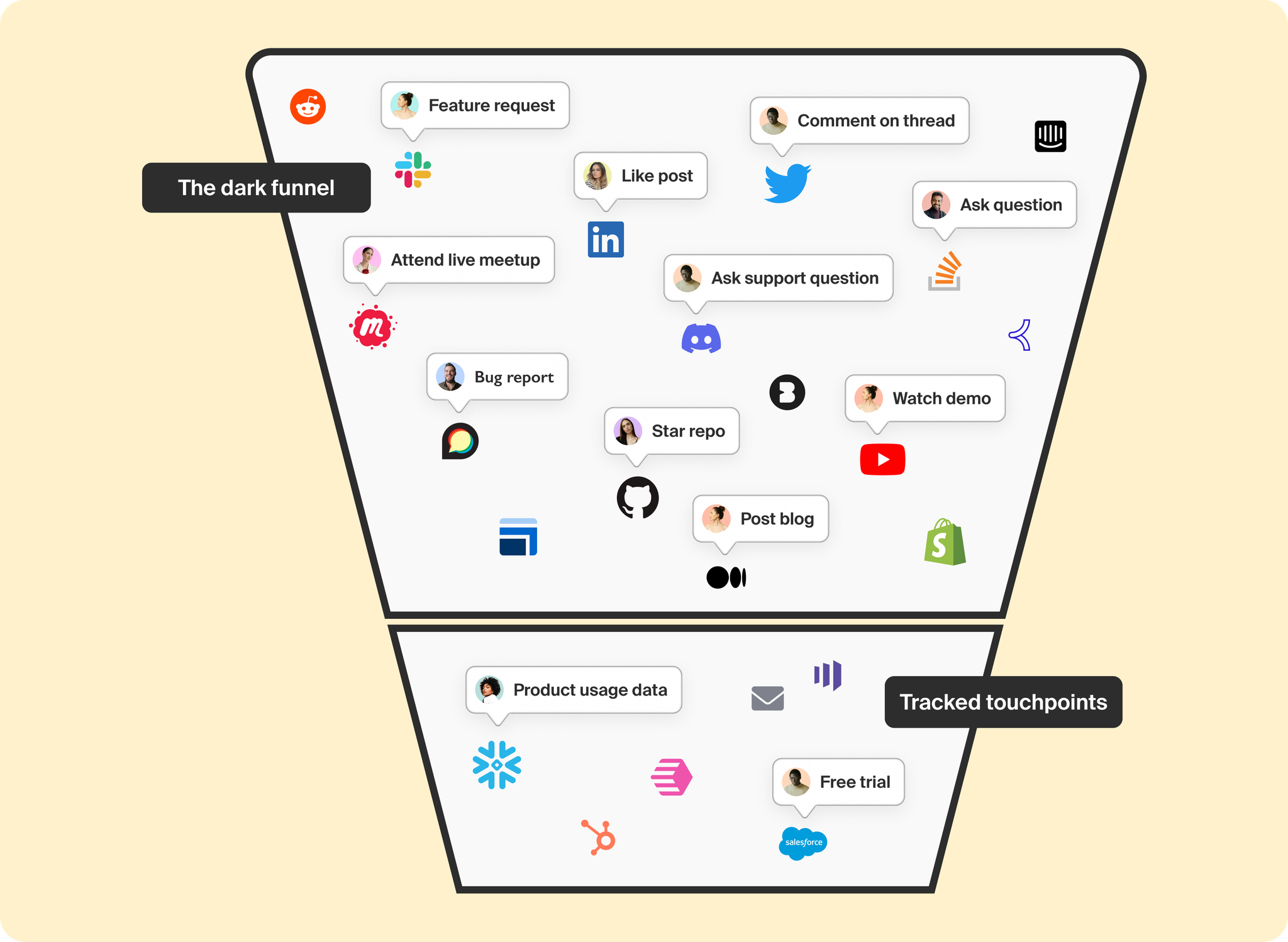
Today’s tech stack is dependent on traditional customer behaviors: website visits, email opens, sales conversations. Those are still business-critical signals, but they’re a smaller piece of the pie.
The average sales rep has about 5% of a customer’s time. The other 95%? It’s spent in places you either can’t follow, can’t keep up with, or can’t make sense of.
The customer journey is no longer a straight line from your pricing page to your demo request form (if it ever was). It’s now a winding road through Slack forums, LinkedIn posts, and Reddit threads. It’s questions on Discord, recommendations on (the artist formerly known as) Twitter, and troubleshooting on Stack Overflow. It’s issues and forks on GitHub, comments on YouTube, and claps on Medium.
The channels will change depending on your customers, but the end result stays the same: The majority of the customer journey is a black box filled with seemingly disparate activities you can’t see, track, or take action on.
The good news is your boss can’t get mad at you about what’s invisible. The bad news is you're missing out on a massive opportunity to deliver great customer experiences.
The 5 Ws of customer experience strategy
The building blocks of better customer experience are the same as any good news article:
- Who
- What
- When
- Where
- Why
Who
You need to know who’s saying and doing the things you want to know about. A lot of digital activity is anonymous by default, which means there’s no way of knowing who’s behind the profile picture, which organization they’re affiliated with, or what their relationship is with your company.
What
You need to know exactly what people are saying and doing. Digital activity comes in many forms, from conversations in online forums to usage trends in your product. You can’t personalize your approach if you don’t know what it is you’re approaching.
🎤 “Common Room allows us to quickly see what our hundreds of thousands of community members are talking about across all our channels and the sentiment of those conversations. We can identify trends across topics or dive into specific topics to get a better understanding of the prevalent conversations in the Webflow community.”
—Matthew Munger, Senior Product Expert at Webflow
When
You need to know when people say or do something. Customers engage in real time—companies have to follow suit. Responding too late to digital activity is as good as not responding at all.
Where
You need to know where people say or do something. Every customer has their preferred digital watering hole. It’s not enough to respond to customers quickly—you have to meet them where they are.
🎤 "[Commn Room is] the first tool that doesn't add more work to the mix. It actually pulls things together in one central spot and is the one place my team can go to see what's happening in the program, rather than going to each one of our different tools. Above all, it saves our team the time and frustration of having to pull data and then manually make sense of it."
—Joshua Zerkel, Head of Global Engagement Marketing at Asana
Why
You need to know why you should respond to certain activities in the first place. Following up with every prospect and customer is a noble goal, but you have to prioritize based on identity, intent, and context.
Of course, talking about gathering all this information is a lot easier than actually doing it. You know the questions you have to answer to improve customer experience—what you need is the how.
How Common Room serves up customer experience gold
Common Room is the only solution that gives you everything you need to deliver better customer experiences all in one place.
Dozens of natively built and fully managed integrations help you connect all your critical customer touchpoints and combine traceable digital interaction data with your customer relationship and product usage data. This gives you a true 360-degree view of the customer journey.
AI-powered identity resolution and data enrichment allow you to automatically create profiles for every individual that interacts with your company (along with the organizations they work for).
This provides you with key demographic and firmographic details, such as job titles, geographic locations, contact information, company sizes, industries, annual revenue, and more.
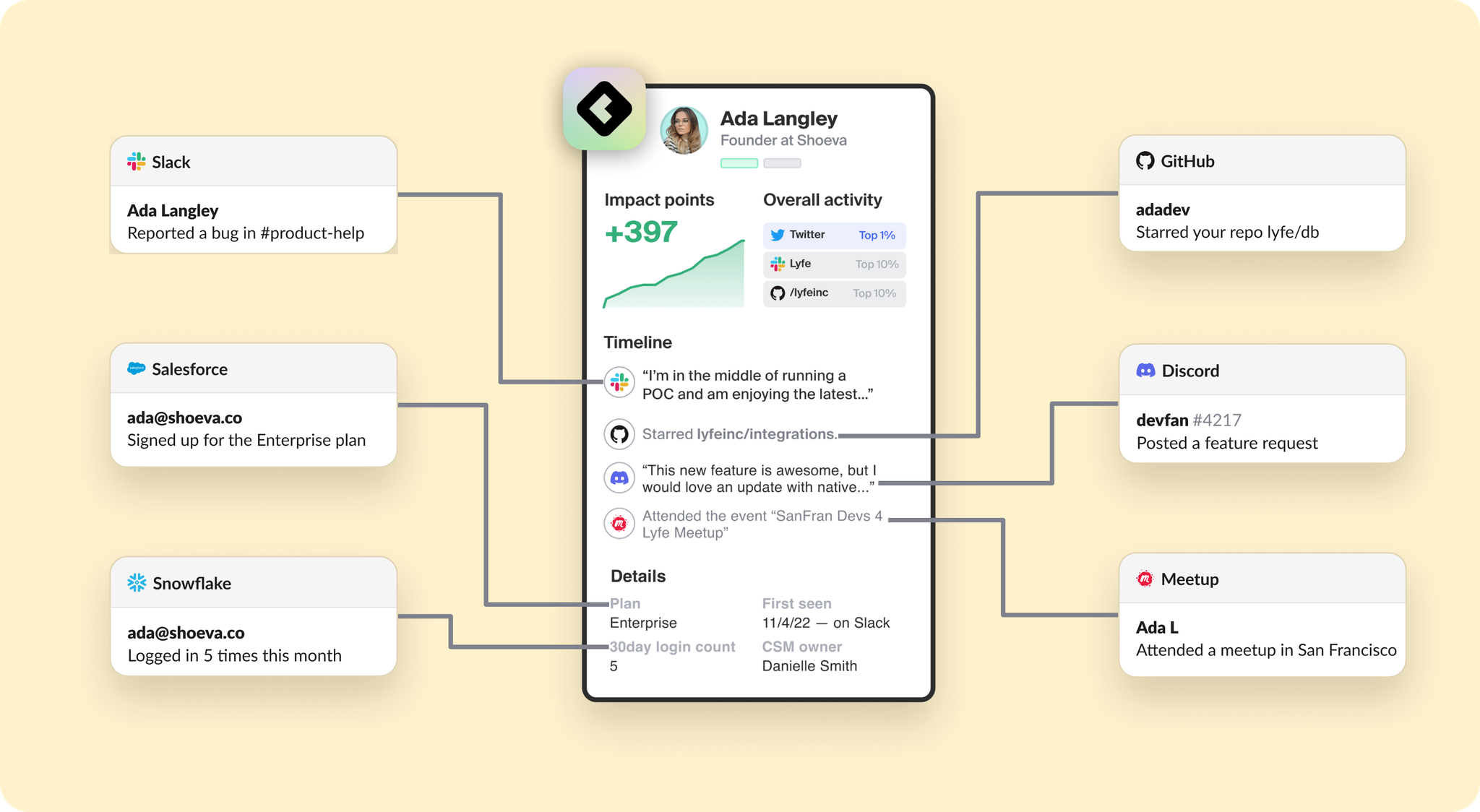
Proprietary machine learning models help you understand exactly what customers are saying and doing across all connected channels, then automatically group this activity into easily searchable categories and reveal whether it’s associated with positive or negative sentiment.
Automated alerts can be programmed to instantly notify you of any customer activity you want to know about in the channels where you already work. Meanwhile, all activity data can be filtered by source, timeframe, and any other dimension you want.
This helps you stay up to date on the customer activities that matter most to you so you always know what to follow up on, when, and where.
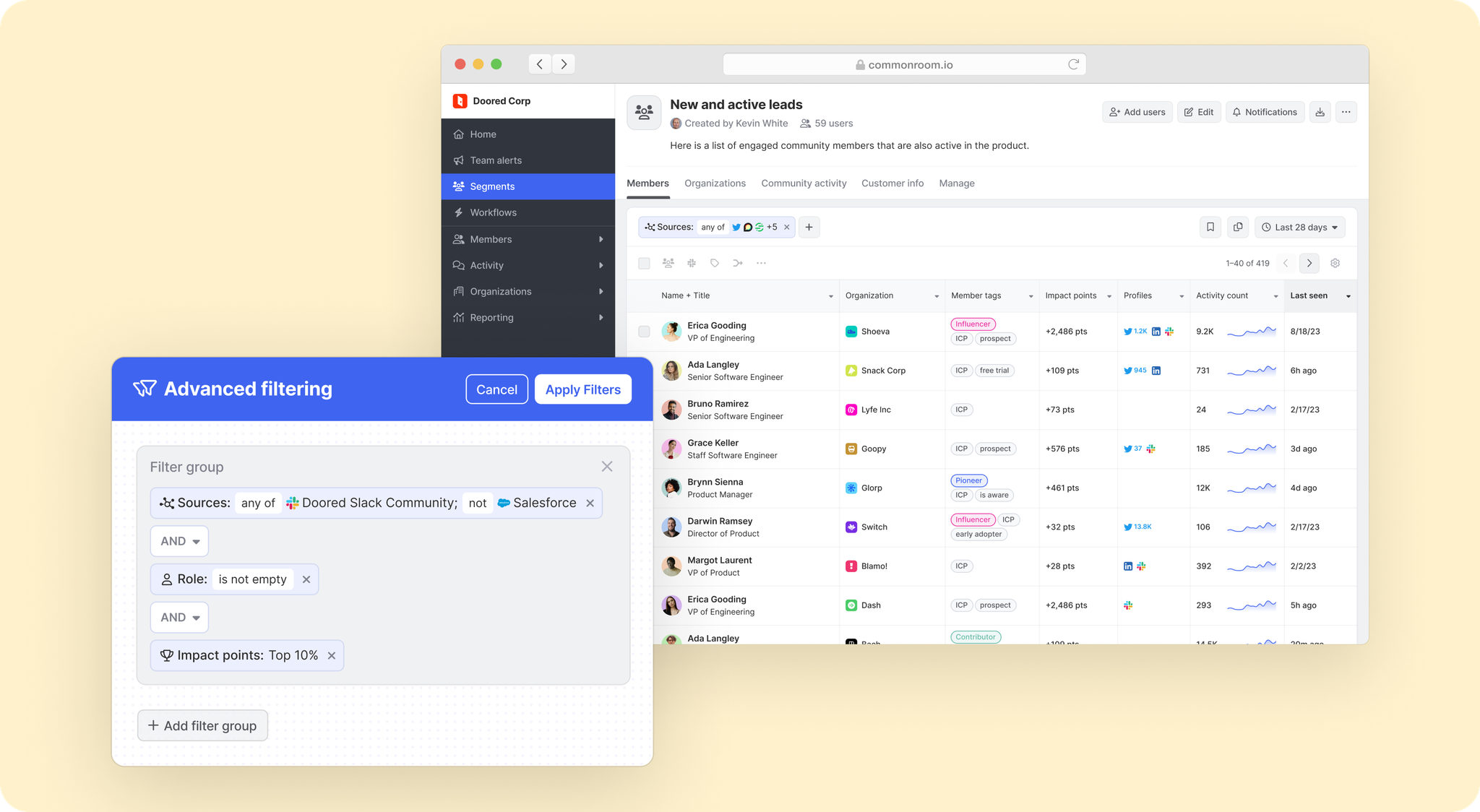
Impact points provide insight into which individuals have the biggest influence across digital channels to help inform your outreach. Tags allow you to zero in on specific individuals, such as ideal personas and purchase decision-makers. And segments let you track, report on, and take action on customizable customer cohorts at scale.
This makes it easy to prioritize customer engagement and take action quickly.
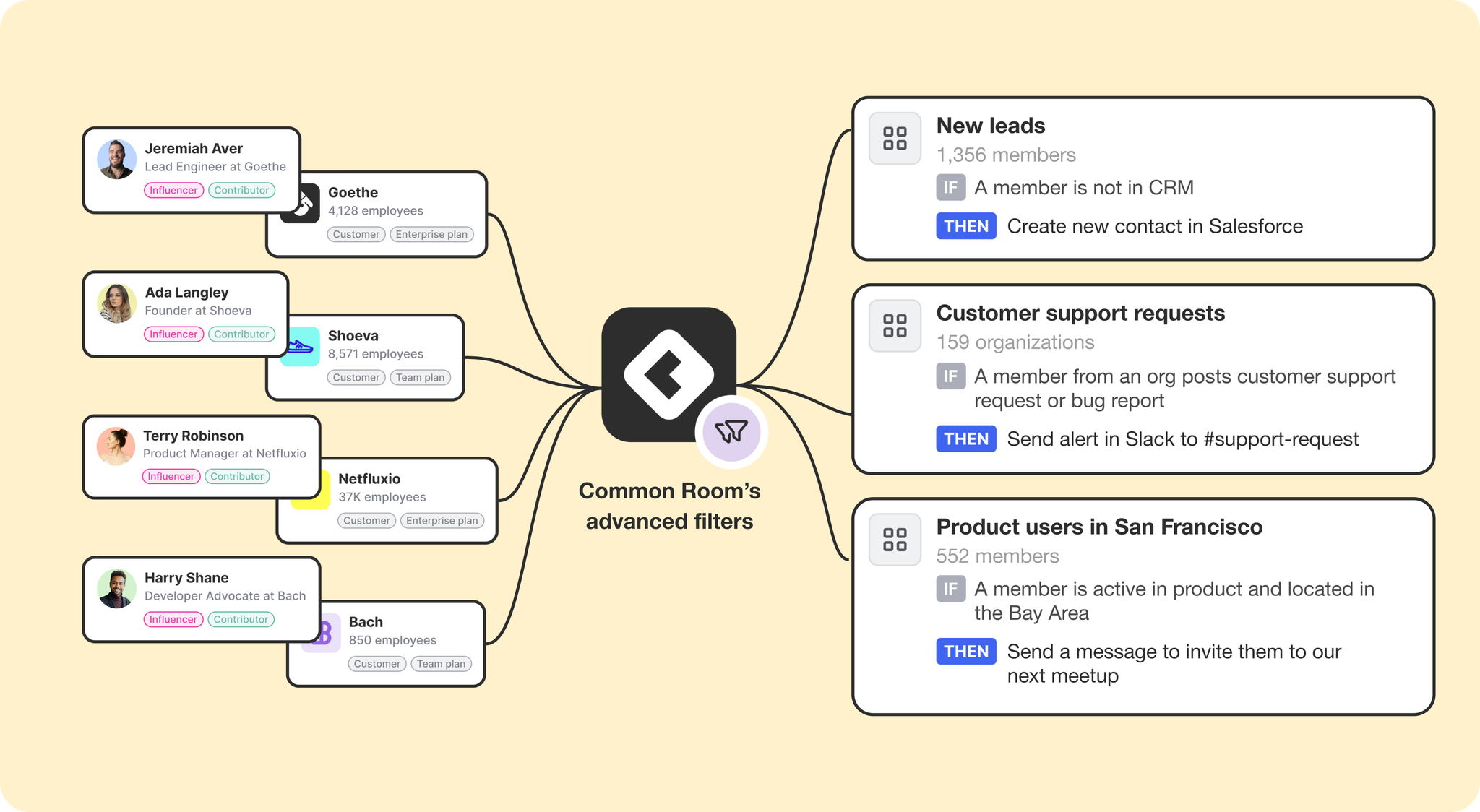
Automated workflows help you organize and engage customers based on predefined criteria, and comprehensive reporting gives you a bird’s eye view of all digital activity across connected data sources, including response rate.
This helps you save time, move fast, and make sure you have visibility into the customer experience from end to end.
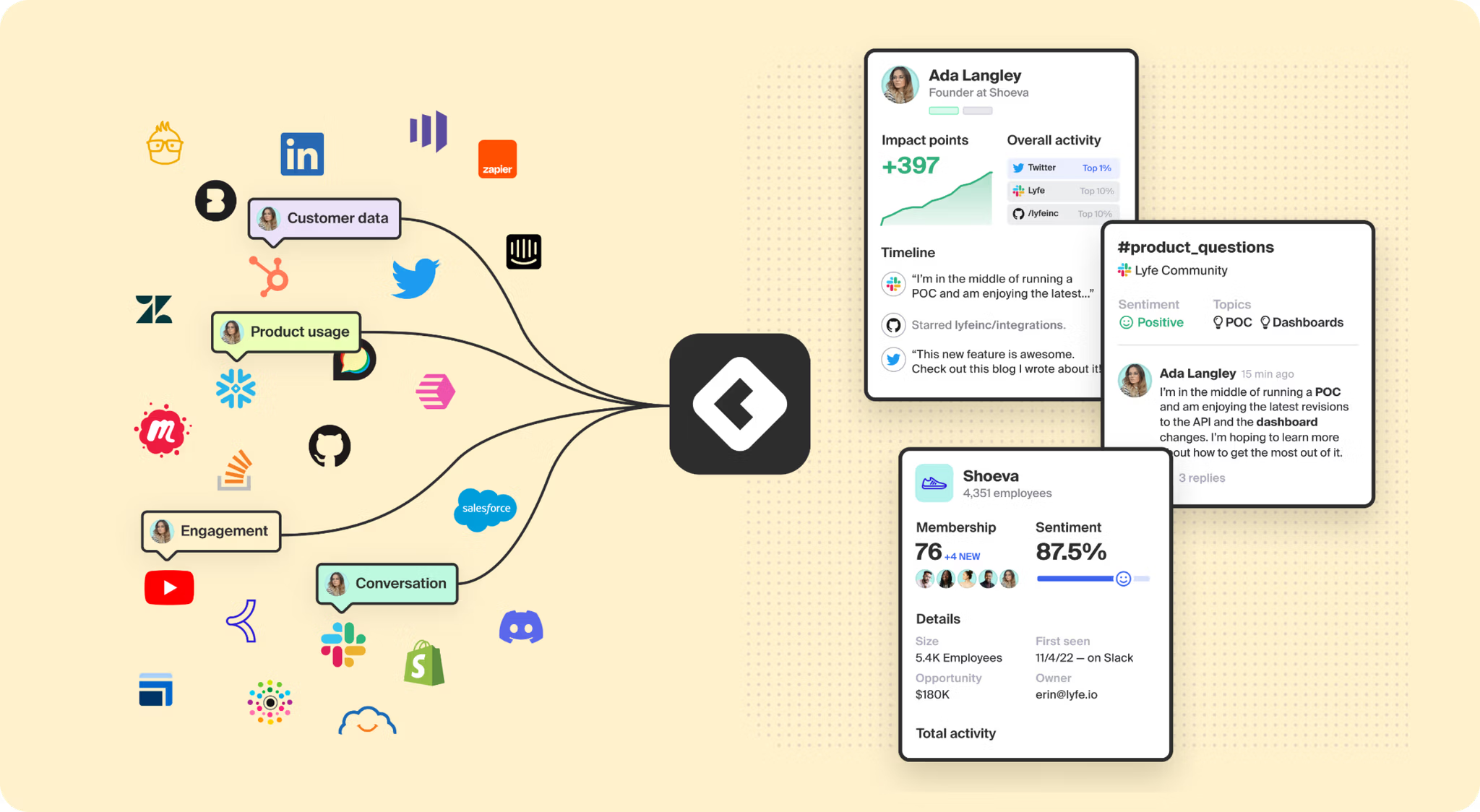
Customer experience strategy should start long before someone becomes a field in your CRM.
Common Room helps you make good on the experiences you want to deliver right from the beginning.
Upgrade your customer experience strategy with Common Room
Ready to see how Common Room helps you streamline and scale your customer experience strategy?


